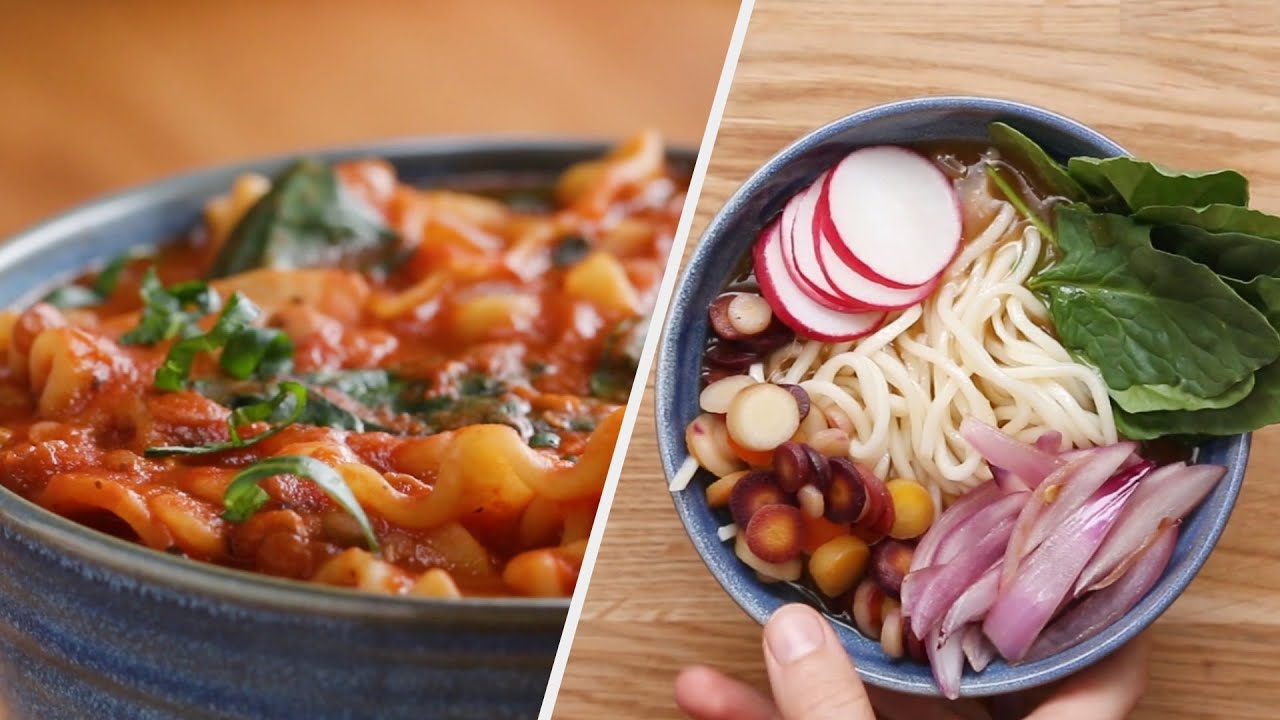
There’s something timeless and magical about making pasta from scratch. The feel of flour under your fingers, the joy of kneading dough, and the satisfaction of biting into a dish you crafted with love—it’s a culinary ritual that connects generations and cultures. Whether you’re dreaming of silky fettuccine, pillowy ravioli, or delicate tagliatelle, homemade pasta can elevate any meal and is surprisingly approachable with the right guidance.
In this step-by-step guide, we’ll walk you through making your own homemade pasta dough from scratch, shaping it by hand or machine, and offering expert tips along the way.
🧂 Ingredients: The Basics of Pasta Dough
For traditional egg pasta (yields about 4 servings):
- 2 cups (250g) all-purpose flour or “00” flour for extra smoothness
- 3 large eggs
- 1/2 tsp salt (optional)
- A drizzle of olive oil (optional, for elasticity)
🔪 Note: You can substitute 1 egg with 2 tbsp water and 1 tbsp olive oil for an egg-free version.
🥣 Step 1: Make a Well in the Flour
- On a clean surface (like a wooden board or countertop), pour your flour into a mound.
- Create a deep well in the center, making sure the sides are high enough to hold your eggs without spilling.
💡 Pro Tip:
If you’re new to this, use a mixing bowl instead of the counter—it’s easier to contain the ingredients.
🥚 Step 2: Add Eggs and Combine
- Crack the eggs into the well and gently beat them with a fork, gradually incorporating the surrounding flour into the mix.
- As the mixture thickens, begin using your hands to bring the dough together.
The dough may look messy at first, but resist the urge to add water—it will come together with kneading.
✋ Step 3: Knead the Dough
- Knead the dough with the heel of your hand, folding and pressing for 8–10 minutes.
- The dough should become smooth, elastic, and slightly tacky (not sticky).
💪 Kneading Tips:
If your dough feels dry, add a tiny bit of water (½ tsp at a time). If too wet, dust with flour as you go.
⏲️ Step 4: Let the Dough Rest
- Wrap the dough tightly in plastic wrap and let it rest at room temperature for 30 minutes to 1 hour.
This allows the gluten to relax, making the dough easier to roll and shape.
⏳ In a rush? Resting for even 20 minutes makes a difference.
🍝 Step 5: Roll Out the Dough
By Hand:
- Cut the dough into quarters.
- Using a rolling pin, roll each piece from the center outward into a thin sheet (about 1–2 mm thick).
- Flour your surface to prevent sticking.
By Pasta Machine:
- Flatten a piece slightly and run it through the widest setting.
- Fold it in half and repeat 2–3 times to build structure.
- Gradually reduce the thickness setting, one pass at a time, until you reach your desired thinness.
📏 Ideal thinness depends on the shape: thinner for spaghetti and fettuccine, thicker for pappardelle or lasagna.
✂️ Step 6: Shape Your Pasta
Once your dough is rolled out, it’s time to cut and shape it.
Classic Shapes:
- Tagliatelle or Fettuccine: Lightly flour the sheet, roll it up like a jelly roll, and slice into ribbons.
- Lasagna Sheets: Cut into rectangles and dust with flour.
- Ravioli: Place filling in small mounds on a dough sheet, cover with another sheet, press around the filling, and cut into squares.
Dust finished pasta with semolina or flour to prevent sticking and cover with a towel while working.
🍳 Step 7: Cook Your Pasta
- Bring a large pot of salted water to a rolling boil.
- Add fresh pasta and cook for 2–3 minutes (or until al dente).
- Drain immediately and toss with your favorite sauce.
Pairing Ideas:
- Fettuccine Alfredo: Creamy sauce clings beautifully to flat ribbons.
- Tagliatelle with Pesto: Let the basil shine against fresh dough.
- Ravioli with Brown Butter Sage Sauce: Simple, elegant, and unforgettable.
🔄 Bonus: Pasta Variations & Tips
🟨 For Colored Pasta:
- Spinach pasta: Add ½ cup puréed spinach and reduce one egg.
- Beet pasta: Add 2–3 tbsp beet purée for a vibrant magenta hue.
- Squid ink pasta: Add 1–2 tsp squid ink for dramatic black noodles (and a briny bite).
🥶 Storing Fresh Pasta:
- Short-term: Keep in the fridge for 1–2 days in an airtight container.
- Long-term: Freeze in floured nests or freeze filled pasta like ravioli on a tray, then transfer to a bag.
🧡 Why Make Pasta from Scratch?
Besides being therapeutic (kneading is a workout and a meditation), homemade pasta:
- Tastes fresher than boxed
- Absorbs sauce better
- Impresses dinner guests (every time!)
- Allows endless customization (herbs, colors, shapes)
🧾 Final Thoughts
Making homemade pasta might seem like a labor of love, but once you try it, you’ll see it’s not just about the meal—it’s about the experience. The texture, flavor, and pride that come with handmade noodles are unmatched by anything you’ll find in a box.
So grab your flour, roll up your sleeves, and create your own little slice of Italy right at home.
🍽️ What will you create—spaghetti for two, a ravioli date night, or a lasagna feast? Share your pasta masterpieces with us at foodtrendalerts.site or tag us on Instagram with #HomemadePastaVibes.




